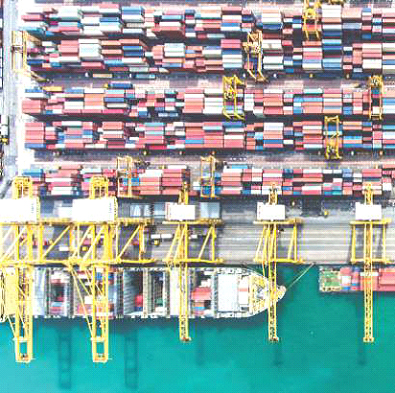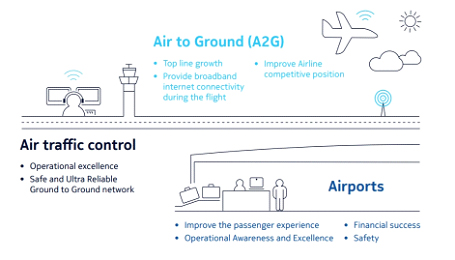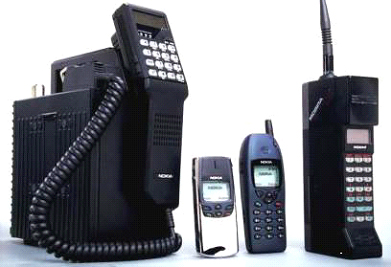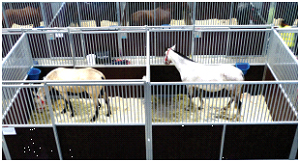The Indian government is proposing to adopt the Integrated Transport and Logistics Policy. This proposal entails the creation of 50 economic corridors, 35 multimodal logistics parks at 15 strategic locations, 10 intermodal stations, among other things.
Forecast to grow at over 7.5 percent this year, India’s economy is the fastest growing in the world reversing decades-old image of an impoverished nation with huge business potentials to rival even China.
The second most populous country with over 1.3 billion after China is also seen to be one of the top five economies in the not so distant future. It’s now the primary source of raw materials for various products and industries. Recognized for its innovations in pharmaceuticals and IT. Sought after for its many world-class products.
And yet despite these positive developments, India’s business landscape remains heavily challenged with bureaucracy, corruption and lack of sophisticated systems to speed up the process.
The logistics industry, the backbone of its economy, is among the sectors on focus to ease doing business in the country. The lack of reliable intermodal and multimodal logistics transport systems in the country has led to higher costs of moving goods which consumers ultimately bear.
Logistics in India was valued at over US$160 billion in 2016 and is forecast to grow at 7.8 percent CAGR in the next five years. It employs about 22 million people and the need for more skilled workers in the sector continues to grow as demand increases.
Studies showed India spends about 14% of its GDP on logistics and transportation as compared to less than 8% by other countries. If logistics costs are brought down to 9%, the country could save up to US$45 billion, thereby making domestic goods more competitive in the global markets.
“India is booming and so is logistics in the country,” said Allan Jose, Treasurer & Convener International Sponsorship Committee-FIATA World Congress 2018 which the Indian government is co-hosting with the Federation of Freight Forwarders Association in India (FFFAI), the National Apex Body of Customs Brokers Associations of India representing over 5,000 companies.
Jose said apart from food, logistics is the second most important thing to survive in India, for without it the goods won’t be able to reach people especially those in the remotest parts of the country.
FIATA Congress Host
In 2014, India bid to host the FIATA World Congress 2017 but lost to Malaysia. Unperturbed, it tried again and this time won to host the coveted FIATA World Congress 2018 organized by the largest non-governmental organization in the field of transportation, the Fédération Internationale des Associations de Transitaires et Assimilés (FIATA), in English the International Federation of Freight Forwarders Associations.
Founded in Vienna on May 31, 1926, FIATA represents today an industry covering approximately 40,000 forwarding and logistics firms.
 Jose said hosting the FIATA World Congress 2018 on Sept 26-29 in New Delhi is a monumental success for India’s bid to be recognized as a major global economic power. India is spending about 10 million Indian rupees for the event which is also partly funded through sponsorships.
Jose said hosting the FIATA World Congress 2018 on Sept 26-29 in New Delhi is a monumental success for India’s bid to be recognized as a major global economic power. India is spending about 10 million Indian rupees for the event which is also partly funded through sponsorships.
“In 2014, we bidded for the 2017 FIATA Congress but we lost to Malaysia so we’re very happy that we’re hosting it this year,” said Jose. “FIATA needs India and the whole world needs India. It’s the fastest growing economy in the world.”
About 700 decision-makers and company owners around the world are expected to attend the four-day event apart from the 800 or so delegates from India. Jose said the organization has even reduced its standard conference fees just to ensure local delegates are able to participate.
“We want maximum participation. We want to showcase India to the whole world,” he said.
Ashish Pednekar, Chairman of FFFAI, said hosting the event will put India on the consciousness of the international business community, boosting further its quest to reach economic growth.
“The entire government is very keen on hosting the event,” said Pednekar, a third generation freight forwarding executive who joined his family business in 1999 as managing director of GVP Group, a full service international freight forwarding company which specializes in “door-to-door international logistics.”
Pednekar explained the Indian government has stepped up its stakes on the promised economic growth by investing on various fledgling industries including the military.
“Yes, we have our challenges but the Prime Minister (Narendra Modi) is pushing hard to implement reforms. Bureaucracy is being cut. New sectors are created. A new department called Skill Development Ministry was also created to make sure that we develop more skilled labor force and we have an MOU with them on this,” Pednekar said.
Inadequate infrastructure, limited digitalization and skilled labor, coupled with antiquated policies and systems on India’s logistics sector negatively impact its growth.
In a joint post conference paper entitled “India-On the Cusp of a Logistics Revolution,” Deloitte Touche Tohmatsu India and Assocham India, which organized the event, pointed out infrastructure is one of the biggest hurdles on the growth of the country’s logistics sector.
“It gets reflected in inadequate and low-quality modal and terminal transport infrastructure, suboptimal modal mix, inefficient and ill-designed storage facilities for cargo and containers and inefficient operational and maintenance protocols, and poor adoption/adaptation of technology. This leads to high and inconsistent cargo transit time, inefficient use of resources and poor fleet management. The selection of the mode of transport, or even storage and terminal handling protocols are rarely linked to cargo characteristics (distance of travel, parcel size, density, etc.),” the paper noted.
“As a result, there is overuse of high-cost modes like road at the expense of cost-effective and sustainable modes like inland waterways and railways. The continuing and prolonged suboptimal system, which erroneously appears to be in equilibrium, needs to be changed. The way to strengthen the Indian logistics infrastructure is about deconstructing the old and building a new rational equilibrium,” it added.
About 60 percent of goods up for exports and imports in India are transported in already congested road transportation delaying their delivery. The proponents of the paper said the vast Indian coastline and river network, which historically remain under-utilized, should be tapped to reduce logistics costs and speed up travel time.
“Cost for coastal shipping is INR 0.15-0.2 per ton km compared to INR 1.5 for railways and INR 2.5 for road. Addressing these anomalies alone provides a huge potential to lower logistics cost in the economy by INR 21,000-27,000 Cr by 2025,” they said.
Using artificial intelligence (AI) can also help automate business processes to reduce/eliminate manual interventions for freight handling, to improve quality and speed up the process. Studies showed almost two-thirds of the logistics costs are hidden which can be traced to theft and pilferage of cargo and holding of inventory.
The Indian government is proposing to adopt the Integrated Transport and Logistics Policy. This proposal entails the creation of 50 economic corridors, 35 multimodal logistics parks at 15 strategic locations, 10 intermodal stations, among other things.
While the national government takes the lead in the reforms, other key drivers in the industry should be actively engaged to give their inputs to achieve the most benefits for the industry that will drive India’s economy to the next level.
We’re all too familiar with Nokia thanks to its mobile phones, which for a time were the most in demand in the world with its popular catchphrase “Connecting People.”
But this 153-year-old Finnish company has long been a beacon of innovation in telecommunications and information technology even before becoming famous for its mobiles and smartphones in the 1990s.
It was making professional mobile radios, telephone switches, capacitors and chemicals for the military and for commercial use. In the 1960s, the Soviet Union tapped it for products like telephone exchanges and robotics and even ventured with Kremlin into a joint scientific tech research.
Past the era of its mobile phones, Nokia has successfully rebounded with billions at its disposal. Last year, the company reported annual revenues of about €23 billion, which in 2015 was just valued at €12.5 billion. Today, it has over 100,000 employees across 100 countries, doing business with 130 nations and highly valued for its tech inventions, aviation in particular.
Rajeev Suri, the Indian-born Singaporean citizen whom the company tapped as Chief Executive Officer in 2014, is said to be the driving force behind Nokia’s recent trans-formation, including its acquisition of Alcatel-Lucent and its successful expansion into vertical markets, the creation of a standalone software business, and the return of the Nokia brand to mobile phones.
An Electronics and Communi-cations Engineering graduate from Manipal Institute of Technology in India, Rajeev is leading the company to venture into more technological products critical to the onset of the Fourth Industrial Revolution commonly referred to as Industry 4.0.
Aviation Solutions
Richard van Wijk and Mervyn Harris, Program Owner Aviation and Director-Air Traffic Manage-ments GEPS-Transportation at Nokia’s offices in The Netherlands and the United Kingdom, respectively, talked to Air Cargo Update in Dubai about the company’s unique solutions for airports and passenger aircraft now in use in the majority of countries in the European Union and elsewhere in the world.
The UK-based Harris said Nokia’s Air Traffic Control (ATC) solutions are currently in use in at least 12 countries, which include Norway, Switzerland and Iceland.
 “There’s no other company that can boast of that as reference,” said Harris who used to work for the UK’s National Air Traffic Services (NATS) and SITA, the world’s leading company providing IT and telecommunication services to the air transport industry. “Our mission control network, the product that we have, addresses issues relating to legacy environment application critical for air traffic control to meet ICAO (International Civil Aviation Organization) requirements.”
“There’s no other company that can boast of that as reference,” said Harris who used to work for the UK’s National Air Traffic Services (NATS) and SITA, the world’s leading company providing IT and telecommunication services to the air transport industry. “Our mission control network, the product that we have, addresses issues relating to legacy environment application critical for air traffic control to meet ICAO (International Civil Aviation Organization) requirements.”
With millions of passengers passing through different airports on a daily basis, communication systems play a critical role in ensuring seamless operations at every station to protect lives and properties.
In today’s world, airports are like mini-cities made up of different industries, concessions, retail shops, airlines, service companies, public safety organizations and government agencies like air traffic control, customs, immigration and border control. They employ millions across the globe and generate billions in aviation and non-aviation related revenues.

 This technology has been here for some time now but companies like Nokia are only utilizing its commercial potentials this year with demand for high-speed internet while flying growing.
This technology has been here for some time now but companies like Nokia are only utilizing its commercial potentials this year with demand for high-speed internet while flying growing.
“This year, we’re launching the commercial European Aviation Network with 30 countries in the EU plus Norway and Switzerland with LTE based stations,” said Van Wijk.
This integrated air-to-ground and satellite network of Deutsche Telekom and Inmarsat powered by technology from Nokia and Thales for MSS-S-band frequencies had the International Airlines Group (IAG) as its first customer.
In the Middle East, company representatives have been invited to make presentations about their products. “We have several meetings with aviation officials here and they have invited us to discuss our products. They are very supportive and we are very happy about it,” said Harris.
Nokia is also working with the government of Ukraine to modernize its communication, navigation and surveillance systems. The company, ironically, is also working with Russia for similar projects.
Tensions remain high between Ukraine and Russia over the latter’s invasion of Ukrainian territory Crimea in 2014.
“Nokia is working with them (Ukraine) and we’re also working very closely with Russia. We’re in the middle of tenders now. We’re more than happy to support them.”
Nokia believes technology will transform the future for the better & it’s slowly being felt in many ways.
“People associate Nokia as a brand with the mobile phone but once we explained what we do, they are very surprised in a very positive way. We bring a vision on where we want to go in the aviation industry,” said Van Wijk.
Horse handling is a steady business, with peaks in case of international competitions…of about 2000 horses handled annually. The other species are less visible but extremely important as well. One-day-old chicks being sent to the Middle East or Africa for farming, pigs imported and distributed in Europe, protected species being exchanged between zoos for DNA variety. Live animal handling is exciting and our staff always do requests for us to go the extra mile.
Luxembourg may just be a tiny nation in Europe with a very small population but it’s big in numbers and innovations. It’s a high-income economy and the second richest country in the world known for its innovative industries in logistics, biotechnology, pharmaceuticals, IT and so on.
It is also the world’s second largest investment fund asset domicile with estimated US$4 trillion deposited in its financial institutions. It is ranked as the second safest tax haven in the world after Switzerland.
In recent years, Skype and Amazon have shifted their regional headquarters to Luxembourg as the country began to establish itself as one of the leading global centers for start-ups, digital financial services and financial technology hub engaging in RegTech, security & authentication, DLT & Smart Contracts, mobile & e-payments, automated investment services, Big Data and analytics.
And that sophisticated way of doing business and looking at things transcend to the country’s robust air freight industry and supply chain.
Big in Europe
LuxairCARGO, the leading air freight handling agent at Luxembourg Airport, is proof of Luxembourgers’ innovative spirit and push for high quality service and excellence.
The company, which caters to all categories of cargo and aircraft, handled a record 938,000 tons of cargo last year and it’s ranked as the 8th top company in the industry.
Laurent Jossart, Executive Vice President of LuxairCARGO, told Air Cargo Update the growth continues this year despite some bumps like a slowdown in volumes last May.
 “During 2017 we experienced a double digit growth and an exceptional peak season. Excellent results for all our customers are always very positive, but for us the most important was to keep the service level at the top and having faced no congestion leading to delays for our customers,” said Jossart who was the Chief Financial Officer of LuxairGroup before assuming his current post in 2014.
“During 2017 we experienced a double digit growth and an exceptional peak season. Excellent results for all our customers are always very positive, but for us the most important was to keep the service level at the top and having faced no congestion leading to delays for our customers,” said Jossart who was the Chief Financial Officer of LuxairGroup before assuming his current post in 2014.
“This year started extremely well with again a historical first quarter in terms of volumes, but as of May, we have seen a slowdown of the growth but with volumes still above 2017 and our budget. Today, the outlook for the rest of the year is still within the expectations.”
Jossart said part of their success is investing on technology, infras-tructure, people and innovative ideas that will enhance their services, thereby, retain and attract more customers.
“Since the move of our activity from the former facilities to the current Cargocenter, we continuously invested in technology, hardware (infra-structure and handling equipment), software and not least, our staff for professional development. The annual level of investment currently exceeds 5 million Euros,” he explained.
Last year, the company renewed its contract with Hermes Cargo Management System’s to support LuxairCARGO’s handling operations but with provision for acquisition.
“In 2017, we took the decision to renew our cargo management system with the acquisition of HERMES and the implementation will start mid-September 2018 by gradually switching our customers to the new system.
Digitalization is key to reduce costs and further increase the quality and transparency of our activity. It will help us to also streamline our processes and communication as well as reduce or even eliminate manual data records,” said Jossart.
More innovations
Two years ago, LuxairCARGO adopted the so-called truck slot system (TSS) which essentially digitalizes the truck acceptance and parking control system at the airport and using tablets as tool to communicate between trucking companies, dispatching and carriers.
The project successfully worked, speeding up the movement of goods, the loading and unloading process and transactions between parties.
Jossart said that’s just the beginning as the company is planning to introduce more innovations to further enhance their services and protect the interest of their customers.
“But the investment in a new CMS is only part of the game as the best way to give a total transparency to the air freight industry starts with the electronic transmission of accurate data. We still suffer from missing FWB, FHL and loose tremendous amount of time fulfilling tasks which were supposed to be fully automated already at the end of the last century. (Cargo 2000),” he said.
“Now we hope that the Cargo IQ will finally bring the expected results, meaning 100% of data interchange between forwarder and carrier. This would really ease our task, reduce the time spend with non-added value works and improve the product,” he added.
The cargo executive said e-commerce may have brought good business in the industry but the company sees general cargo as still the legacy product that will keep the air freight sector sailing in good or bad times.
 “Our customers mainly fly wide bodied aircrafts with specialized cargo products as well as general cargo but e-commerce is just general cargo. We do not keep record of the tonnages it represents in comparison to the other products. This is anyway a very little part of our activity, even if it is getting more and more sensitive in terms of time of transfer or delivery to final consignee,” said Jossart.
“Our customers mainly fly wide bodied aircrafts with specialized cargo products as well as general cargo but e-commerce is just general cargo. We do not keep record of the tonnages it represents in comparison to the other products. This is anyway a very little part of our activity, even if it is getting more and more sensitive in terms of time of transfer or delivery to final consignee,” said Jossart.
The cargo expert said it’s difficult to ascertain e-commerce’s future growth with challenges seen looming like low customs charges, among others.
“Even though e-Commerce is currently booming on intercontinental flights, we assume that the volumes will stagnate, even decline again on the long term as the distribution to the end customer will happen more and more on a continent level (limited to the same customs union areas to avoid costly customs clearance for low value shipments). So Customs could become the show stopper for the growth of individual intercontinental deliveries as a big part of these shipments are declared as low value,” he said.
Growth in pharma & perishables
Mainly driven by aging and growing populations, pharmaceutical products will remain an important part of the global healthcare industry and the air freight sector.
Experts forecast the global pharmaceutical industry to grow 6.3% CAGR in 2018 to US$1.2 trillion. And these products would require air freight to preserve their quality while being transported across the world.
LuxairCARGO is cognizant of this fact with Jossart describing pharmaceuticals as “success story.” The company continues to invest on good facilities for these products along with international certifications.
“The PIL, pharmaceuticals and healthcare products, is a success story. We invested massively in a dedicated infrastructure in 2013, about 4 million Euros, and have been through the GDP certification process. In the meantime we have been already recertified in 2017,” he said.
“We were one of the first air cargo platform to realize an important investment for pharma business and had worldwide been the first platform being GDP certified including the forwarders, carriers, trucking companies and of course us as handling agent. It is a community quality process. We are in for the pharma product with excellent results in term of reputation and reliability,” he noted.
LuxairCARGO handled 31,000 tons of pharmaceuticals in 2017 and forecast it to grow up to 34,000 tons this year.
“We will invest further in the infrastructure in 2019 to automatize the transfers to the cool cell area (70 ULD positions) and continue to believe this market segment will develop in the future,” Jossart stressed.
LuxairCARGO also continues to see growth in the variety of perishables that the company handles for their clients.
“Perishables are a historical product. We have 400 m2 of coolers plus cools cells for up to 70 10ft ULD storage, but again this is mainly transit cargo, handled as quickly as possible before going to its final destination. On import side, fruits and flowers from Central America (Ecuador and Mexico) are the fastest growing products,” said Jossart.
Horse handling steady business
LuxairCARGO prides itself with a reputable and state-of-the-art live animal center with horses as top residents at any given time.
Jossart said the company takes very seriously its role in handling animals up for transportation that “passion for animals” among new recruits is a requirement.
“LuxairCARGO has invested regularly in a complete and state-of-the-art live animal center. Next year, we will renew our center for ungulate species. This year we inaugurated a new groom area, two years ago it was an extension for horses, in total 45 stalls. This allows us to handle large amounts of animals simultaneously up to full cargo flights. Horse handling is a steady business, with peaks in case of international competitions (Olympics, etc.), of about 2000 horses handled annually,” the cargo executive said.
Apart from horses, the company also handles animals of different varieties transported to different parts of the world.
“The other species are less visible but extremely important as well. One-day-old chicks being sent to the Middle East or Africa for farming, pigs imported and distributed in Europe, protected species being exchanged between zoos for DNA variety. Live animal handling is exciting and our staff always do requests to go the extra mile. In fact, one of our conditions while recruiting staff for our AVI station is the passion for animals,” said Jossart.
Expansion and challenges
The Cargocenter, which LuxairCARGO manages at Lux Airport, has been expanded thrice over the past two decades since it was inaugurated. This year, it’s seeing more improvements with the opening of four more parking bays that will allow simultaneous parking of 12 widebody cargo aircraft.
“The Cargocenter we manage since 22 years has been expanded already three times since the inauguration and still allows some growth in the future but the fleet of our customers is requesting more and more ramp parking positions. Last peak season, we have some hours each week reached the maximum capacity of the ramp,” Jossart explained.
Ponts et Chaussées, the engineering and construction body of the government, began work on the project in 2016 and by autumn of this year, the four parking bays will be available for use.
“We will in autumn this year bring into service four additional parking spots that will allow simultaneous positioning of 12 wide bodied aircrafts. Today, we have to limit the access to the handling due to parking spot limitation. This increase will give more freedom of operation to the carriers. If the market remains as strong as the last 20 months, we will consider the necessary infrastructure adaptations to meet the growing demand,” Jossart shared.
A veteran in both aviation and cargo industries, Jossart forecast growth to be sustained in the sectors but the challenge of keeping up with the changing times remain, especially in far flung areas.
He believes digitalization, which the aviation sector embraced first, should also be fully applied in the air freight industry “to have a complete visibility and transparency in the transportation chain.”
“By having accurate and live data on hand, the individual processes can better be analyzed and steered. Additionally, process disruptions can more easily and earlier be detected and corrective actions taken in order to assure the on time delivery and thus protect our customers. We also noticed that the requests received from the forwarders remained the same for the last 20 years,” said Jossart.
“In fact, what is still missing is a reliable transparency and live update of the shipment status made available to the forwarder, shipper and consignee. Unfortunately the electronic interchange is not yet respected everywhere with the same consistency and precision,” he opined.
Game Changer
 Laurent Jossart, Executive Vice President LuxairCARGO, is among top executives in aviation and cargo industries with wide and extensive experience, known for pushing the limits and instituting reforms.
Laurent Jossart, Executive Vice President LuxairCARGO, is among top executives in aviation and cargo industries with wide and extensive experience, known for pushing the limits and instituting reforms.
Prior to joining LuxairGroup in July 2006, he was the Managing Director of Brussels South Charleroi Airport credited for its successful restructuring, including designing a new terminal and negotiating with its main client, Ryanair.
In 2013, Jossart was awarded “CFO of the year” in Luxembourg in his capacity as CFO of LuxairGroup, a position he held for seven years before taking the challenge of helping LuxairCARGO become more attractive and competitive.
“I have started in air cargo only in January 2014 when I moved to LuxairCARGO. Before, I was the CFO of LuxairGroup and in this position, I gained already some insights through the financial data. However, it has been a real challenge especially as since 2013, we have seen a growth of 34%(250kt) or in average an increase of 7.9% per year,” he shared.
“During the first year, I restructured and stabilized the operational teams to be able to align the processes to the current needs.”
With proven track record to deliver good results, Jossart is highly regarded in Europe’s business community and for those aspiring to follow his path, here’s his advice: “Be passionate, result oriented and creative. Also you need to care for and challenge your staff to go the extra mile. Be ready to meet wonderful cargo people sharing the same enthusiasm.”
And for those facing challenges in the cargo industry, Jossart who studied at Solvay Brussels School of Economics and Management (SBS-EM), the business school of the Université libre de Bruxelles (ULB), one of the largest universities in Belgium, says it’s best to deal with it in a creative way.
“With creativity—air cargo people always find the solution for any challenge.”
Etihad Airways Inflight Chef, Sanjay Thakur, has broken the world record for creating and serving dinner to guests at the highest pop-up restaurant in the world, located at Everest Advanced High Camp.
Accompanied by fellow chef Soundararajan Palaniappan, Mr. Thakur completed the grueling mission earlier this month, reaching the high camp and serving the meal at an altitude of 5,585 metres above sea level.
Mr. Thakur’s record-breaking achievements were celebrated at Etihad’s headquarters recently with a special ceremony attended by Etihad senior management and staff.
Commenting at the event, Tony Douglas, Group Chief Executive Officer of Etihad Aviation Group, said, “Sanjay exhibits the true Etihad spirit and we are thrilled to welcome him back home and congratulate him whole-heartedly for this epic achievement. We are all very proud of him.”
The world record-holding chefs prepared for months to make the attempt, including acclimatisation and fitness training, and complex logistics to ensure they had the permit, gear and transportation they needed to prepare the meal and welcome guests.
“Coming from the Himalayas, I’ve grown up in awe of these mountains and it has been a huge personal achievement to combine my love of food and cooking with a remarkable project to promote sustainability and to help protect this unique part of the world,” adds Mr. Thakur.
In addition to breaking a world record, the goal of the challenge was to raise awareness of sustainability in the region, with all proceeds being donated to Altruistic Hands, a Nepal-based charity.
The meal itself included ingredients collected from the alpine environment around them on the mountains. Staying true to the theme of sustainability, the team used solar energy to cook the meal, served on lava rock plates.
Emirates will codeshare on this route and as part of the Emirates flydubai partnership, each airlines’ passengers will have the opportunity to connect in Dubai to hundreds of destinations across the world.
Thierry Aucoc, Senior Vice President, Commercial Operations at Emirates said, “Our partnership with flydubai enables travellers in Thessaloniki and the greater surrounding area to easily access destinations across Emirates network, particularly cities in Australia, Thailand, and China, all of which are popular for local travellers. We also expect the route to boost the number of visitors to the region, from important inbound markets like Melbourne and Sydney, as well as China and Japan.”
For bookings under the codeshare, Emirates passengers receive complimentary meals and the Emirates checked baggage allowance on flights operated by flydubai in Business and Economy classes.
Commenting on the launch, Alexander Zinell, the Chief Executive Officer of Fraport Greece said: “I wholeheartedly welcome the start of flydubai’s year-round flights from Dubai to Thessaloniki. Our commitment to the local communities in Greece has always been the introduction of more flights and new services connecting this beautiful country with the rest of the world. More travel options and more connectivity will result in more passengers and help drive Greek tourism.
“flydubai, our latest airline partner, begins its service connecting Thessaloniki with Dubai. Travelling between those two enchanting destinations is now easier than ever before. I would like to thank the flydubai team for working with Fraport Greece and realizing for the first time ever this very important route,” Alexander Zinell, the Chief Executive Officer of Fraport Greece added.
With flights to Catania in Italy, Dubrovnik in Croatia, Krakow in Poland, and the start of flights to Helsinki, Finland in October, flydubai’s route network in Europe will reach 27 points.
Flight Details
Business Class return fares to Thessaloniki will start at AED 8,365/EUR 1,250 while Economy Class return fares will start at AED 1,879/EUR 447 including taxes. Flights can be purchased from flydubai’s website (flydubai.com), its Customer Centre (+971) 600 54 44 45, flydubai travel shops or through travel partners.
Flights can be booked through flydubai’s website (flydubai.com), the official flydubai App, Contact Centre in Dubai on (+971) 600 54 44 45, the flydubai travel shops or through our travel partners.
For competitive travel packages visit Holidays by flydubai which provides passengers with thousands of hotel options that suit all budgets and ancillary services including airport transfers, sightseeing packages, UAE visa facilitation, car rental and excursions.
The world’s largest air cargo carrier, FedEx Express, ordered 12 767 freighters and 12 777 freighters from Boeing valued at US$6.6 billion at list prices.
The companies jointly announced the deal on June 19 saying the move is part of FedEx’s continuing fleet modernization program as demand in the air freight industry picks up.
“We are taking another positive step in our fleet modernization program as we add more efficient, lower emission aircraft to our global fleet,” David L. Cunningham, President and CEO of FedEx Express, said in a statement. “The Boeing 767 and 777 Freighters have brought greater efficiency and reliability to our air operations. The 777, with its tremendous range characteristics, has allowed us to provide faster transit times around the globe. We are excited to add more of these aircraft to our fleet.”
The news came as the air cargo industry gathers strength with analysts forecasting it to increase by another 4-5 percent this year.
Air cargo carriers are adding capacity to keep up with demand, either by converting passenger airplanes into freighters or ordering new production cargo jets. With the latest order from FedEx Express, Boeing has sold more than 50 widebody freighters so far in 2018.
“We are honored that FedEx has again placed its trust on the wings of the Boeing 767 and 777. This repeat order is a big vote of confidence in Boeing’s market-leading freighter family and the long-term outlook for air freight,” said Kevin McAllister, president and chief executive officer, Boeing Commercial Airplanes.
FedEx Express and Boeing have a long-standing partnership. The express carrier is a major operator of the Boeing 757 Freighter and the largest operator of the 767 Freighter and 777 Freighter. FedEx is also a customer of Boeing’s Global Services business.
The 767 Freighter, based on the 767-300ER (extended range) passenger jet, can carry approximately 58 tons (52.7 tonnes) of revenue cargo with intercontinental range, making it a flexible platform for serving long-haul, regional or feeder markets.
The 777 Freighter is the world’s longest range twin-engine freighter. The jet can fly 4,900 nautical miles (9,070 kilometers) with a payload of 112 tons (102 metric tonnes or 102,000 kg). With the 777 Freighter, FedEx has been able to connect Asia with its hub in Memphis, Tenn. non-stop and reduce transit times by up to three hours. This has enabled FedEx to accept packages later in the day and still deliver them on time.
The 777 Freighter also uses 18 percent less fuel compared to the airplanes it replaces, and provides quieter takeoffs and landings that meet airport noise standards.